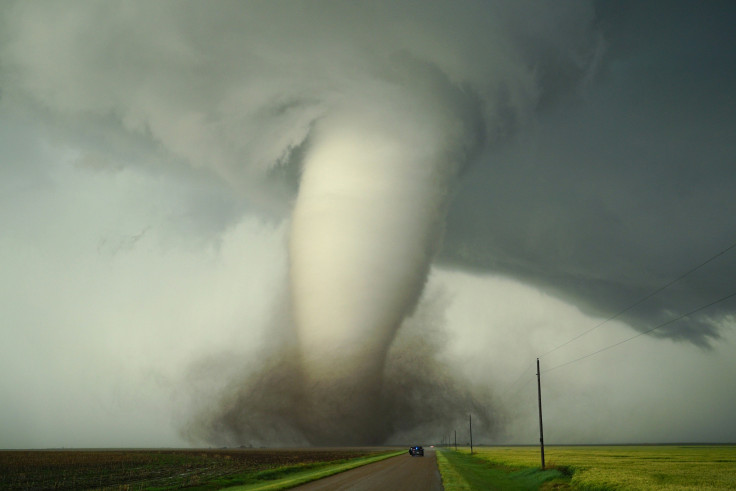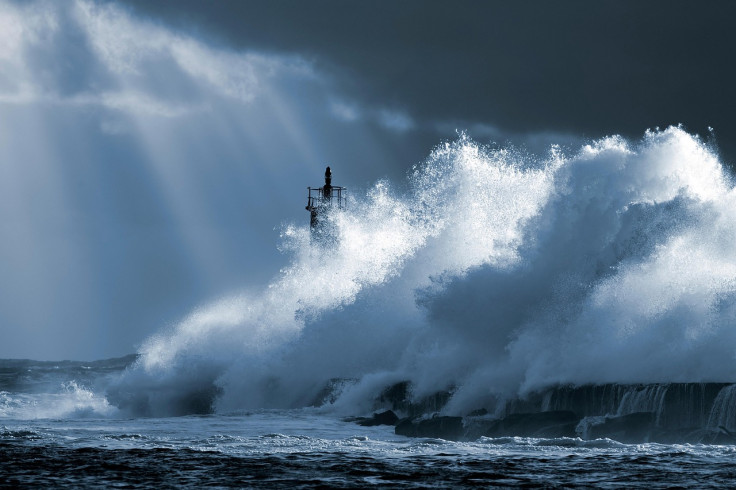California Hit by Rare Tornado Warning: Residents Told to Prepare
Southern California faces an unusual tornado threat as a Pacific storm brings severe weather and evacuation warnings

A powerful October storm has unnerved Californians as rare tornado warnings were issued across the coast.
With flash flooding, damaging winds, and debris flow risk in wildfire‐scorched areas, emergency services are urging residents to treat the threat as real, even as the meteorological anomaly draws intense scrutiny.
The National Weather Service (NWS) and Storm Prediction Centre (SPC) have urged residents to prepare for damaging winds, flash flooding, and isolated tornadoes.
Unusual Tornado Risk for Southern California
In a highly uncommon development, the SPC placed parts of Southern California, including Los Angeles, under a Level 1 tornado risk zone on Tuesday, 14 October 2025. This marks the first time since February 2023 that Los Angeles has been included in a tornado threat area.
'An isolated tornado and wind-damage threat will be possible Tuesday morning through midday along the coast in southern California,' SPC forecasters wrote in their official bulletin.
The warning follows a low-pressure system moving south from the Pacific Northwest, bringing unstable atmospheric conditions and triggering severe weather alerts across coastal and inland regions.
Storm System Brings Heavy Rain and Gusts

The rare October storm has already delivered torrential rainfall and wind gusts exceeding 70 mph (110 km/h) in parts of Central and Southern California. San Luis Obispo County and surrounding areas were under active tornado warnings in the early hours of Tuesday, though these expired by 12:45 AM local time.
The NWS has maintained a Severe Thunderstorm Watch for regions stretching from Paso Robles to southwest of Los Angeles, warning of strong convection and the potential for brief tornadoes.
According to The Watchers, the storm has already caused localised flooding and prompted rescues in some areas. Satellite imagery shows organised thunderstorm clusters forming over the eastern Pacific before moving inland.
Evacuation Warnings Issued for Burn Scar Zones
Authorities in Los Angeles County have issued evacuation warnings for neighbourhoods near recent wildfire burn scars, including Pacific Palisades and Malibu. These areas are at heightened risk of debris flows due to saturated soil and steep terrain.
🚨 EVACUATION WARNING & SHELTER IN PLACE ISSUED 🚨
— City of Malibu (@CityMalibu) October 13, 2025
Malibu zones MAL-C111 and MAL-C112 are under evacuation warning beginning TODAY, October 13 at 10 PM due to the upcoming storm.
🏠 Neighborhoods under Evacuation Warning include:
Rambla Pacifico
Carbon Beach West / Malibu… pic.twitter.com/glB5sFeYI8
The Los Angeles Fire Department confirmed that officers were conducting door-to-door visits in high-risk zones to inform residents of evacuation options. Warnings are expected to remain in effect from Monday night into early Wednesday morning.
Why Tornadoes Are Uncommon in California
California historically sees very few tornadoes, due to its geometry, stable coastal air masses, and weak vertical wind shear.
This storm's alignment of subtropical moisture, Pacific low pressure, and instability has produced conditions more favourable for tornado formation than typically seen in October.
While tornadoes are rare in California, they are not unprecedented. In 2023, a small tornado touched down in Los Angeles County. Earlier that year, the strongest tornado in four decades damaged buildings in Montebello and injured one person.
Meteorologists note that California's geography and climate typically limit tornado formation, but shifting weather patterns and stronger storm systems have increased the frequency of such events in recent years.
Residents Urged to Stay Alert
Emergency services and weather agencies are urging residents to monitor local alerts and prepare for rapidly changing conditions. The SPC has warned that the storm system could produce damaging winds, flash flooding, and isolated tornadoes through Tuesday afternoon.
'A line of low-topped convection will move east-southeastward through the early morning hours while posing a threat for mainly occasional strong to damaging winds,' the SPC said.
Local officials recommend securing outdoor items, avoiding travel during peak storm hours, and having emergency kits ready in case of power outages or evacuation orders.
How to Stay Safe During Severe Weather
- Monitor alerts: Use the FEMA app, local news, or NOAA Weather Radio.
- Prepare an emergency kit: Include water, food, a flashlight, batteries, and medications.
- Avoid travel: Stay off roads during peak storm hours.
- Secure outdoor items: Bring in furniture, bins, and anything that could become airborne.
- Know your evacuation zone: Especially if you live near burn scars or flood-prone areas.
© Copyright IBTimes 2025. All rights reserved.





















